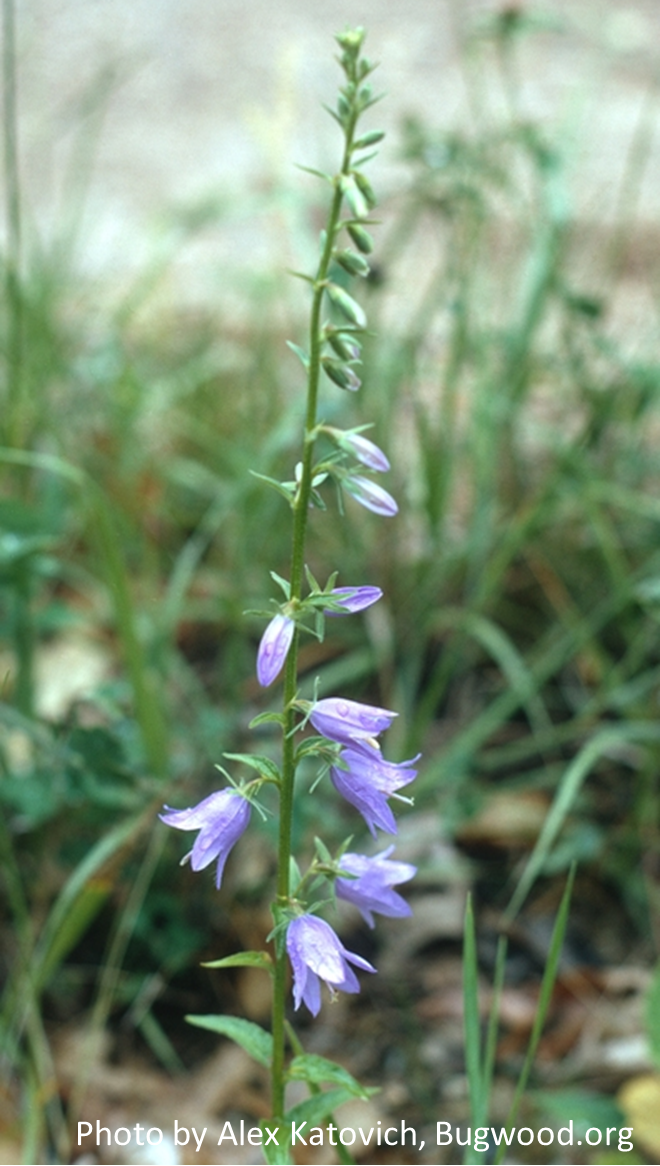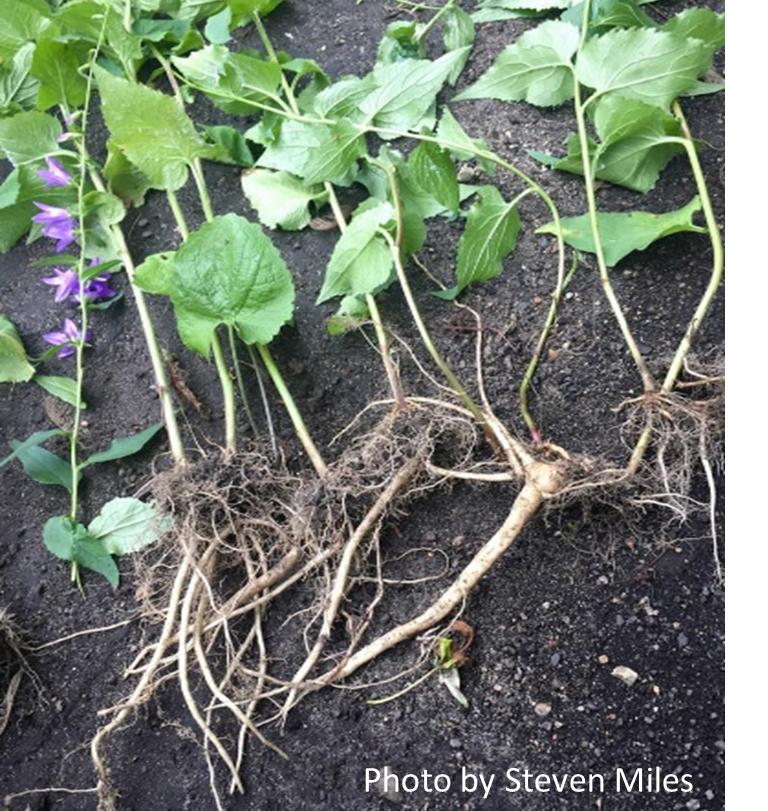Creeping Bellflower (Campanula rapunculoides)
By Dave Brink, Mineral County Montana State University Extension, Email David Brink
Introduction

Creeping bellflower, also known as rover bellflower or rampion bellflower, is an herbaceous creeping perennial in the Harebell family. Native to Eurasia, it has become widely naturalized in North America. Initially introduced as an ornamental, this plant has spread aggressively into lawns and gardens where it is difficult to control. There are other non-native Campanula species that may also be weedy in nature as well as several native species (C. parryi, C. rotundifolia, C. scabrella, C. uniflora) that look similar. This makes proper identification an important first step in management.
Identification and Biology
Creeping bellflower is a perennial plant with unbranched stems that are usually 1 to 3 feet tall. The stems bear five-lobed, blue to purple, bell-shaped flowers that are 0.75 to 1.5 inches long. Flowers are typically arranged along one side of the upper third of the stem and develop upwards throughout the summer. Numerous small, winged seeds are produced by each flower. Leaves at the base of the plant are 1 to 3 inches long with a stalk (petiole) and either spearhead or heart-shaped with coarsely-toothed margins. Upper leaves lack a petiole, are much smaller, and lance-shaped. The root system of creeping bellflower is unique and what makes this plant so difficult to manage. Creeping lateral roots (rhizomes) sporadically develop carrot-shaped taproots from which more lateral roots develop. Depending on soil type, these rhizomes and taproots can extend over 12 inches deep. New plants can emerge from either fragmented rhizomatous roots or taproots, making control by physical removal or cultivation a challenge.
Habitat and Spread
Creeping bellflower is often found near older homes and abandoned farmsteads as an escaped ornamental. From there it invades nearby pastures, fields, riparian areas, parks, roadsides, waste areas, fencerows, and lawns. Soils removed from these sites may contain seeds or root fragments which can further spread creeping bellflower. Seeds are also offered for sale from various suppliers; some warn about its weedy nature, others do not. It grows in sandy to loamy soils and tolerates full sun to shade. Creeping bellflower reproduces by seed, root fragmentation, and sprouting directly from rhizomes, creating dense stands, and crowding out desirable vegetation.
Management
Control of creeping bellflower takes time and effort. Digging and sifting soil to a depth of 12 inches can remove most lateral roots and taproots. Root materials should be bagged and disposed of properly. New growth from any missed root fragments should be removed or killed within 10 days to prevent taproot formation. This process can take at least two years to control creeping bellflower. Herbicides can also be effective, but applications must be repeated throughout the growing season and for several years to exhaust the extensive root reserves. Herbicide active ingredients found to be effective include glyphosate (non-selective) and clopyralid, triclopyr, and dicamba. Not all herbicides are approved for use on gardens or lawns, so careful selection of products is important. When using herbicides, always read and follow product labels.
Further Information
Check out the video "Roving Bellflower" by Noelle Orloff, MSU Schutter Lab Diagnostician.
For more information about this month's weed post, contact Extension Invasive Plant Specialist Jane Mangold. Past posts are available in the Monthly Weed Post Directory.
This weed post is also available as a printable PDF (622 KB).

